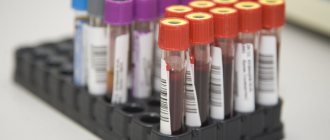General information. Copper. Cu.
Copper is an element of Group I of the periodic table; at. n. – 29, at. m. – 64. The name comes from lat. Cuprum – Cyprus. Copper has been known since ancient civilizations.
Copper is a malleable and ductile metal of a reddish color, with high electrical and thermal conductivity. Copper is resistant to air and water. Natural sources of copper are the minerals bornite, chalcopyrite, malachite, and native copper is also found.
In industry, copper compounds are used to make electrical wires, coins, pipelines, heat exchangers, etc.; alloys of copper with other elements (bronze, etc.) are widely known.
In medicine, copper sulfate is used as an antimicrobial and cauterizing agent. Preparations of various copper salts are used externally for washing and douching; in the form of ointments for inflammatory processes of the mucous membranes; in physiotherapy. Copper in combination with iron is used in the treatment of children with hypochromic anemia.
Copper-containing preparations and dietary supplements are also used in the treatment and prevention of diseases of the musculoskeletal system and hypothyroidism. The use of a copper intrauterine device as a means of contraception has become widespread.
The method of disinfecting pool water by saturating it with silver and copper ions without the use of chlorine using the Silvertronix automation system allows you to reliably protect water from pathogens for a long time even when the filtering equipment is turned off; in addition, this method does not have a detrimental effect on bacteria and viruses to the development of sustainable immunity.
Physiological role of copper
Copper enters the body mainly through food. Some vegetables and fruits contain from 30 to 230 mg% copper. A lot of copper is found in seafood, legumes, cabbage, potatoes, nettles, corn, carrots, spinach, apples, and cocoa beans.
Up to 95% of the copper entering the body is absorbed in the gastrointestinal tract (with its maximum amount in the stomach), then in the duodenum, jejunum and ileum. Bivalent copper is best absorbed by the body. In the blood, copper binds to serum albumin (12-17%), amino acids - histidine, threonine, glutamine (10-15%), transport protein transcuprin (12-14%) and ceruloplasmin (up to 60-65%).
It is believed that the optimal rate of copper intake into the body is 2-3 mg/day. Copper deficiency in the body can develop with insufficient intake of this element (1 mg/day or less), and the toxicity threshold for humans is 200 mg/day.
Copper is able to penetrate into all cells, tissues and organs. The maximum concentration of copper is noted in the liver, kidneys, brain, and blood, but copper can also be found in other organs and tissues.
The liver plays a leading role in copper metabolism, since it synthesizes the protein ceruloplasmin, which has enzymatic activity and is involved in the regulation of copper homeostasis.
Copper is a vital element that is part of many vitamins, hormones, enzymes, respiratory pigments, participates in metabolic processes, tissue respiration, etc. Copper is of great importance for maintaining the normal structure of bones, cartilage, tendons (collagen), elasticity of the walls of blood vessels, pulmonary alveoli, skin (elastin). Copper is part of the myelin sheaths of nerves. The effect of copper on carbohydrate metabolism is manifested by accelerating the processes of glucose oxidation and inhibiting the breakdown of glycogen in the liver. Copper is part of many important enzymes, such as cytochrome oxidase, tyrosinase, ascorbinase, etc. Copper is present in the body's antioxidant defense system, being a cofactor for the enzyme superoxide dismutase, which is involved in neutralizing oxygen free radicals. This bioelement increases the body's resistance to certain infections, binds microbial toxins and enhances the effect of antibiotics. Copper has a pronounced anti-inflammatory property, softens the manifestations of autoimmune diseases (eg, rheumatoid arthritis), and promotes the absorption of iron.
Toxic dose for humans: more than 250 mg.
Lethal dose for humans: no data.
Serum copper (Cu) level testing
Copper is a vital trace element that plays a significant role in the synthesis of hemoglobin and the activation of respiratory chain enzymes. It is part of bones, cartilage, connective tissue and myelin sheaths.
Units
μg/L (micrograms per liter).
What biomaterial can be used for research?
Venous blood.
How to properly prepare for research?
- Do not eat for 2-3 hours before the test; you can drink clean still water.
- Do not smoke for 30 minutes before the test.
General information about the study
Copper is an important cation found in many enzymes.
The main sources of copper for humans are food products such as nuts, chocolate, mushrooms, liver, cereals and dried fruits, and water if it has been in contact with copper-containing items (for example, copper-containing utensils). After entering the gastrointestinal tract, copper is absorbed in the small intestine and, combining with blood proteins, is transported to the liver. Its excess with bile is removed from the body with feces and urine.
Copper deficiency, as well as its excess, are rare pathological conditions. More often there is an oversaturation of the body with copper, associated with a violation of its metabolism, or chronic poisoning. A hereditary disease that leads to increased copper deposition in body tissues is called Wilson-Konovalov disease. Its main symptoms are:
- anemia
- nausea, vomiting
- stomach ache
- jaundice
- increased fatigue
- sudden mood changes
- trembling of limbs
- swallowing disorder
- unsteady gait
- dystonia
- the appearance of a specific color of the iris of the eyes
If the kidneys are involved in the pathological process, urine formation may be impaired, leading to anuria. Some of these symptoms sometimes also appear in acute or chronic copper poisoning, which occurs due to environmental pollution, as well as due to liver diseases that interfere with the metabolism of the trace element.
Copper deficiency can occur suddenly in people suffering from diseases that cause severe malabsorption (cystic fibrosis, celiac disease). These diseases are accompanied by neutropenia, osteoporosis and microcytic anemia.
An insufficient amount of copper in the blood threatens the production of defective red blood cells with a low life expectancy, as well as a decrease in the activity of enzymes containing this microelement.
What is the research used for?
- To diagnose Wilson-Konovalov disease (usually in conjunction with a ceruloplasmin test).
- To assess the patient's condition in cases of suspected copper poisoning, as well as copper deficiency or disorders affecting copper metabolism (together with a ceruloplasmin test).
What do the results mean?
Reference values
For men: 700 - 1400 mcg/l.
For women: 800 - 1550 mcg/l.
Reasons for increased copper levels:
- intravenous administration of copper-containing solutions,
- use of oral contraceptives,
- primary biliary cirrhosis,
- chronic inflammatory diseases (rheumatoid arthritis, systemic lupus erythematosus),
- hemochromatosis,
- hyperthyroidism,
- hypothyroidism,
- leukemia,
- lymphoma,
- anemia (pernicious, iron deficiency, aplastic).
Reasons for decreased copper levels:
- Menkes disease ("curly hair disease"),
- Wilson–Konovalov disease (hepatolenticular degeneration),
- diseases of the gastrointestinal tract (sprue, celiac disease, lesions of the small intestine),
- kidney and liver diseases,
- long period of enteral nutrition,
- kwashiorkor,
- cystic fibrosis,
- collagen metabolism disorders,
- primary osteoporosis,
- sarcoidosis
The results of the study should be assessed in conjunction with the analysis for ceruloplasmin and clinical data. An isolated increase in copper concentration in the blood does not confirm the presence of the disease, but only indicates the need for further clinical search.
What can influence the result?
- Copper levels increase during pregnancy and during the period of taking estrogens and oral contraceptives.
- The drugs carbamazepine, phenobarbital, estrogens, oral contraceptives, phenytoin increase the level of copper in the blood, nifedipine reduces it.
Reduced copper content in the body
Causes of copper deficiency:
- insufficient intake;
- long-term use of corticosteroids, non-steroidal anti-inflammatory drugs, antibiotics;
- dysregulation of copper metabolism.
The main manifestations of copper deficiency:
- inhibition of iron absorption, impaired hemoglobin formation, inhibition of hematopoiesis, development of microcytic hypochromic anemia;
- deterioration of the cardiovascular system, increased risk of coronary heart disease, formation of aneurysms in the walls of blood vessels, cardiopathy;
- deterioration of bone and connective tissue, impaired bone mineralization, osteoporosis, bone fractures;
- increased predisposition to bronchial asthma, allergic dermatoses;
- degeneration of the myelin sheaths of nerve cells, increasing the risk of developing multiple sclerosis;
- hair pigmentation disorder, vitiligo;
- enlarged thyroid gland (hypothyroidism, thyroxine deficiency);
- delayed sexual development in girls, menstrual dysfunction, decreased libido in women, infertility;
- development of distress syndrome in newborns;
- lipid metabolism disorders (atherosclerosis, obesity, diabetes);
- suppression of immune system functions;
- accelerating the aging of the body.
Increased copper content in the body
An increased content of copper compounds in the body is very toxic to humans.
Causes of excess copper:
- excessive intake into the body (inhalation of vapors and dust of copper compounds in production conditions, household intoxication with solutions of copper compounds, use of copper utensils);
- dysregulation of copper metabolism.
The main manifestations of excess copper:
- functional disorders of the nervous system (memory impairment, depression, insomnia);
- when inhaling vapors, “copper fever” may occur (chills, high temperature, drenching sweat, cramps in the calf muscles);
- exposure to dust and copper oxide can lead to lacrimation, irritation of the conjunctiva and mucous membranes, sneezing, burning in the throat, headache, weakness, muscle pain, gastrointestinal disorders;
- dysfunction of the liver and kidneys;
- liver damage with the development of cirrhosis and secondary brain damage associated with a hereditary disorder of copper and protein metabolism (Wilson-Konovalov disease);
- allergic dermatoses;
- increased risk of developing atherosclerosis;
- hemolysis of red blood cells, the appearance of hemoglobin in the urine, anemia.
Excess copper in Wilson-Konovalov disease
Wilson-Konovalov disease is a genetically determined disorder of copper metabolism, which results in the formation of excess copper in the body and the development of severe hereditary diseases of the central nervous system and internal organs.
In Wilson-Konovalov disease, the function of the ATP7B protein, which binds copper in liver cells, is disrupted. Excess copper, not bound by protein, in the liver leads to inflammation and further fibrosis and cirrhosis. Copper is released from the liver into the blood and migrates throughout the body, settling in the eyes, kidneys, and brain. Excess copper in these organs leads to toxic damage.
The main symptoms of the disease are stiffness of movement, which is caused by impaired motor function of the body due to copper deposits in the brain, liver failure and cirrhosis, and the appearance of a copper-colored rim on the iris of the eyes.
The disease is treatable, the main directions of which are medications to increase the removal of copper from the body, a diet to prevent excess copper, and vitamins. Patients with this disease require lifelong treatment. It is a mistake to believe that excessive concentrations of copper in the body lead to the development of this disease. However, the symptoms of the disease are caused precisely by a violation of the binding and removal of copper from the body.







